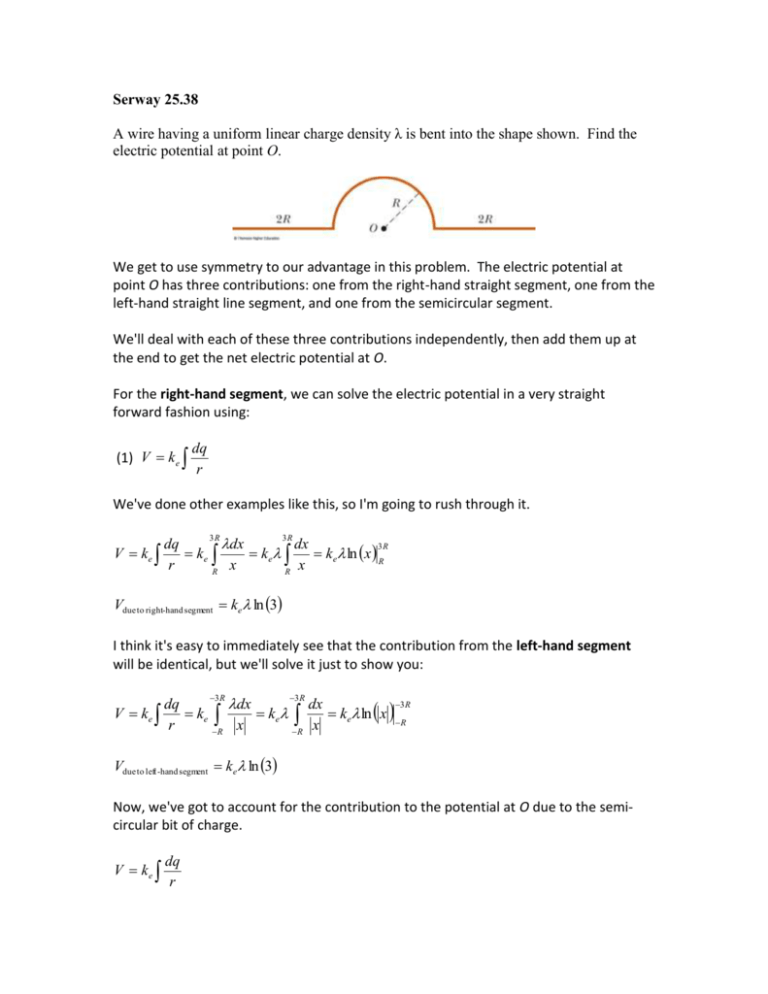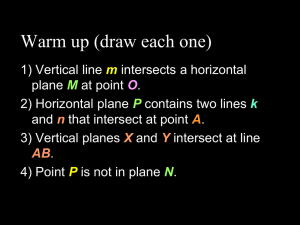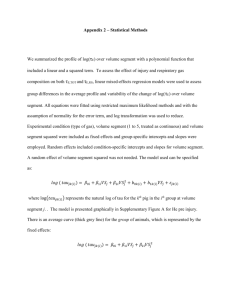25.38
advertisement

Serway 25.38 A wire having a uniform linear charge density λ is bent into the shape shown. Find the electric potential at point O. We get to use symmetry to our advantage in this problem. The electric potential at point O has three contributions: one from the right-hand straight segment, one from the left-hand straight line segment, and one from the semicircular segment. We'll deal with each of these three contributions independently, then add them up at the end to get the net electric potential at O. For the right-hand segment, we can solve the electric potential in a very straight forward fashion using: (1) V k e dq r We've done other examples like this, so I'm going to rush through it. dq dx dx 3R V ke ke ke ke ln x R r x x R R 3R 3R Vdue to right-hand segment ke ln 3 I think it's easy to immediately see that the contribution from the left-hand segment will be identical, but we'll solve it just to show you: 3 R 3 R 3 R dq dx dx V ke ke ke ke ln x R r x x R R Vdue to left -hand segment ke ln 3 Now, we've got to account for the contribution to the potential at O due to the semicircular bit of charge. V ke dq r The tricky part here is to correctly parameterize dq in terms of spatial coordinates. All the charge here is arrayed along an arc, so let's recall the definition of the arc length: ds Rd Each little chunk of charge on the semicircle resides in a very small chunk of arc length, so: dq ds Rd . Plugging this into equation (1), we obtain: Vsemicircle dq Rd ke ke ke d ke r R 0 0 So, the net electric potential at point O results from the sum of the three contributions: VO Vsemicircle Vdue to left -hand segment Vdue to right-hand segment VO ke 2ke ln 3 VO ke 2 ln 3











